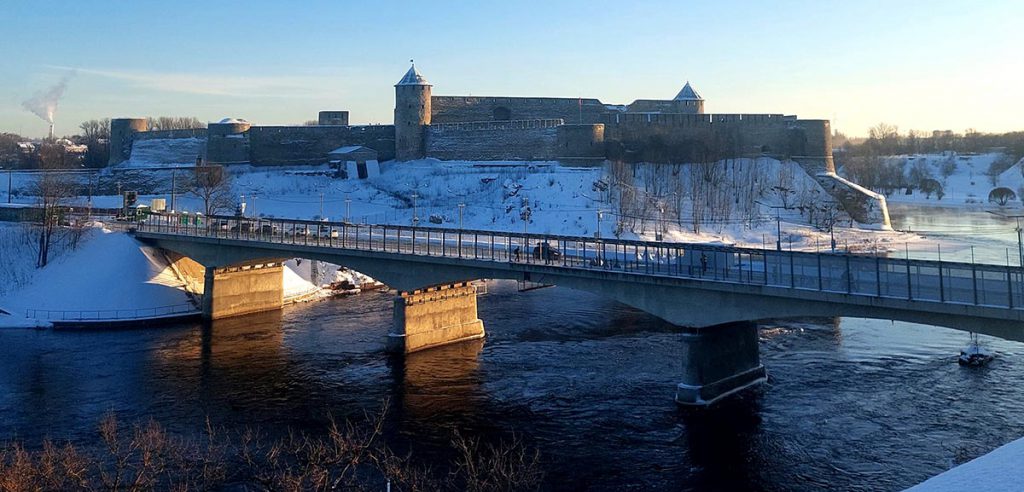Traditionally, Nordic and Baltic elites hold divergent views on migration. Despite this, they have presented a united front in their response to recent border crises with Belarus and Russia, write Stefano Braghiroli and Sandra Hagelin
Since Russia’s full-scale invasion of Ukraine, and amid Moscow’s barely concealed expansionist appetites, the Baltic states have increasingly been making the headlines. As a consequence, Finland and Sweden have abandoned their traditional neutrality, and opted for NATO membership. Half-serious, half-comic headlines have referred to the Baltic Sea as 'Lake NATO'. The 2004 EU enlargement to the east was exacerbated by the geopolitical shifts triggered by Russia’s recent war of aggression. All this has brought the southern and northern shores of the Baltic Sea – politically speaking – closer than ever.
Half-serious, half-comic headlines have referred to the Baltic Sea as 'Lake NATO'
EU members and close neighbours Estonia, Latvia, Lithuania, Finland, Sweden and Denmark have a lot in common. Indeed, they share century-long connections that date back to the middle ages and the Hanseatic League. However, the Iron Curtain ad hoc divided them for almost fifty years, when the USSR occupied the Baltic states. This division between the Baltic shores has, at least in part, shaped these countries’ differences in geopolitics, along with their attitudes to the role of the state, and the economy.
The 2015 refugee crisis triggered EU-level debates on migration and asylum. These debates highlighted an existing – albeit waning – cognitive dissonance in the region. Public discourse tends to portray Nordic countries as champions of humanitarian protection. The Baltic states, meanwhile, are generally assumed to prioritise border security over humanitarian concerns.
Our recent research looked at how Nordic-Baltic elites understand two key political events: the 2021 EU-Belarus border crisis, and the mass exodus of Russian citizens following Moscow’s 2022 invasion of Ukraine. In particular, we looked at national government narratives, European Parliament debates, and the voting behaviour of EP members.

The two shores of the Baltic Sea are not so distant. In fact, Nordic and Baltic elites’ views are more similar than you might imagine.
Overall, national narratives overlap considerably with what emerges from parliamentary debates and voting patterns. Nordic and Baltic MEPs, and their respective governments, tend to depict the Belarus-EU border crisis as a weaponisation of migration whose principal antagonist is Belarus’ ruler Aleksander Lukashenka. The primary aim of EU debate is to secure Belarus' border with Poland, Latvia and Lithuania. Indeed, the humanitarian dimension related to the responsibility to protect appears much lower on the EU agenda.
EU debate aims primarily to secure member states' borders with Belarus. The responsibility to protect appears much lower on the EU agenda
The trend for justifying collective pushbacks of migrants at borders is more evident in the Baltic states, and less pronounced in the Nordics. Yet no open criticism has emerged from one Baltic shore against the other, either in the EP or between national governments.
Nordic and Baltic elites, in conjunction with national authorities, support more direct involvement by the EU and its agencies to protect their borders with Belarus. Nation-state borders and EU external borders overlap. Given Lukashenka’s human rights violations, the EU sees these borders not only as a physical barrier, but as a demarcation between ideological and cultural divisions.
The EU sees the border with Belarus not only as a physical barrier, but as a demarcation between ideological and cultural divisions
National narratives, parliamentary debates and voting patterns also appear generally convergent when it comes to limiting Russian nationals' EU access. EP analysis highlights an increasing emphasis on Russian citizens’ assumption of responsibilities and, from summer 2022, growing calls for a visa ban.
Summer 2022 was the point at which Russian forces' heinous crimes in Ukraine were uncovered. Concurrently, the surge of Russians escaping military call-up reached its peak with the Kremlin's announcement of partial mobilisation. This coincided, too, with border protection rising up the national agenda. Baltic and Finnish governments moved unilaterally towards banning Russian entry and suspending Russian visas. From this juncture, the emphasis on increasing restrictive measures has grown, and is overlapping with the idea of securing national and EU borders.
National narratives highlight a growing convergence among EU governments to justify and/or adopt restrictive measures. Remaining differences between Nordic and Baltic governments and legislators are more about intensity and proactiveness than policy preferences. Securitisation often emerges as the default option. Governments' relative distance from the centre of the crisis, rather than partisanship or historical path-dependency, tends to determine the differences between them.
While the role of ideology is not irrelevant, it seems to highlight differences between mainstream and non-mainstream forces, rather than between conservatives and progressives. Notably, Nordic left-wing MEPs criticise Ukraine, the EU, and the West far less than their continental counterparts. Furthermore, those MEPs maintain strong emphasis on humanitarianism towards ordinary Russian citizens – even after summer 2022. It's worth noting, too, that the positions of Baltic MEPs representing Russophone minorities diverge, to varying degrees, from the prevailing narrative.
The synthesis of national and EP narratives suggests that converging narratives often correspond with harmonising policymaking approaches. Following Moscow’s attempt to weaponise migration, in November 2023, Finland closed its eastern border with Russia. It was a move that recalled the 2021 Belarus-EU border crisis, during which Lukashenka threatened to 'flood' the EU with 'drugs and migrants'. This aligns with the outcomes of our own analysis, which highlights the increasing convergence between the Nordic and Baltic approaches. Should they face the same challenges, Estonia and Latvia have threatened similar measures.